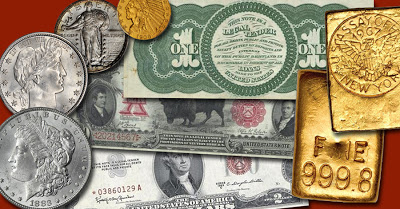
Answer: Concerning “specie,” this refers to minted coins of silver and gold, not to bars or raw metal. In popular parlance the term has been misused many times, but this is what it should mean.
In general, an “unparted” bar is one containing native gold metal, as taken from the ground. Such a bar contains much gold, but it also contains naturalalloys such as silver. The gold metal has not been refined. A “fine” gold bar, per the definition used by the New York Assay Office (opened in 1854) is one that is nearly pure. Purity was expressed in thousandths. Thus, a bar of .999 fine gold has a fineness of 999/1000ths. To qualify as “fine” gold in the 19th century, a bar had to be at least .990 pure, which is a tad short of the .999 pure often seen today in gold ingots that are traded for commerce or investment.
“Legal tender” refers to a monetary unit that is accepted or authorized by a government for use in trade and for payment of money due the government. There are some interesting exceptions to this. For example, in 1864 Uncle Sam would not accept his own Legal Tender notes in payment at par for gold coins, silver coins, or Proof coins.





